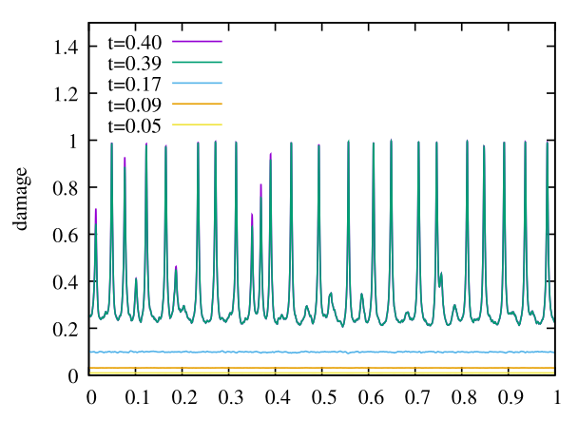Multiphysics coupling
The aim of our works is to characterize, model and simulate multiphysics coupling within various materials (such as metals, ceramics and polymers/elastomers) or various applications . We are primarily interested in the development of new models for the macroscopic behavior of materials or the development of new numerical methods adapted to this context.
Permanent members : Djaffar Boussaa (CR), Thierry Désoyer (Prof ECM), Dominique Eyheramendy (Prof ECM), Frédérique Lebon (Prof AMU), Stéphane Lejeunes (IR), Laurent Sabatier (IR)
Modeling and characterizing coupled behaviors
For this topic, we are looking at problems where mechanics is coupled with several physics (thermics, chemistry or electromagnetism, etc) in a non-linear and generally non-stationary framework. The modeling of the behavior can be dealt in a purely phenomenological way or in conjunction with other works in the «mechanics of heterogeneous media and homogenization » group. Applications range from nuclear power and aeronautics to transport and materials processing. The scientific questions addressed are mainly related to the strength and service life of structures, taking into account their environment (fatigue, aging, creep, damage/healing, etc).

Numerical and software aspects
Multiphysics problems lead us to develop specific numerical formulations (e.g. space-time isogeometric or multigrid methods) that can help overcome certain numerical obstacles specific to multiphysics problems (e.g. intrinsic time scales specific to each physics). These issues can also be applied to software development in the form of internal tools (e.g. in-house finite-elements code) or commercial codes (like Abaqus).
 |
Figure 3: Multi-fracture of a fragile elastic bar subjected to an explosion. Solution obtained with an Isogeometric Space-Time formulation with a time-discontinuous Galerkin scheme and a phase-field model. |